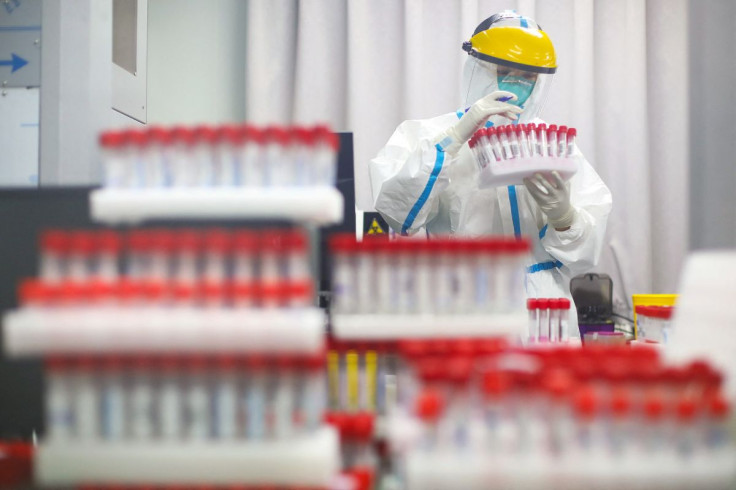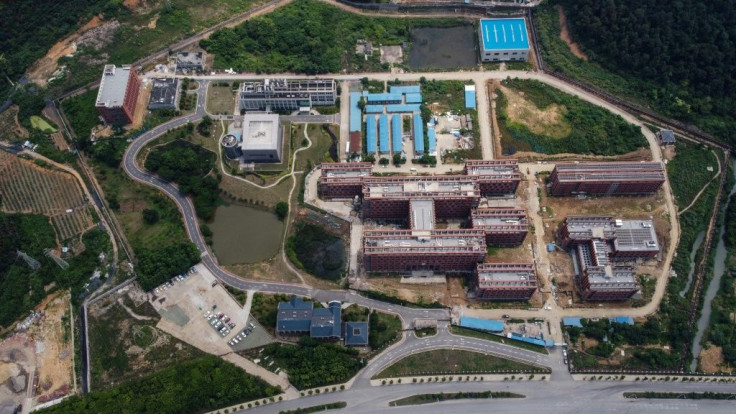China Lab Safety Failures Could Lead To Another Pandemic: Washington Post

KEY POINTS
- China has been slow to adopt safety standards after building new labs
- Two high-level labs in Wuhan suffer from equipment problems and poor hazardous-waste management
- Chinese officials admitted that many of their labs lack specialized biosafety managers and engineers
China continues to struggle with lab safety after spending billions of dollars on lab construction and genetic engineering research, an investigation by the Washington Post has revealed.
Multiple investigations by U.S. and international scientists and lawmakers into the coronavirus outbreak in Wuhan and the brucellosis outbreak that stemmed from a Lanzhou lab suggested that the vulnerabilities of China's laboratories that allowed deadly pathogens to escape in the past could lead to another pandemic in the future, the Washington Post reported.
Chinese government reports as well as statements by Western and Chinese officials and scientists familiar with China's laboratories revealed that the facilities are beset with equipment problems and insufficient safety training, according to the publication.
Several official statements and inspection reports obtained by The Post pointed to China's "systemic failures" in the implementation of safety standards in its laboratories that would prevent the leaks of deadly bacteria and viruses.
These issues "in some cases resulted in lab animals being illegally sold after being used in experiments, and contaminated lab waste being flushed into sewers," the report said.
Experts said that officials setting demanding goals for labs while covering up accidents and shortcomings only exacerbated the problems.
Beijing began constructing new labs and modernizing its biomedical institutions after severe acute respiratory syndrome (SARS), a coronavirus, was first detected in China's southeastern Guangdong province more than 20 years ago and eventually killed about 800 people worldwide. Two Beijing workers had separately contracted the virus while working in a lab and spread it to seven others, one of whom died.
China collaborated with the U.S. and European scientific institutions to build modern labs nationwide to detect and mitigate undiscovered diseases quickly. But safety programs and training required in top Western labs were either slow to take hold or completely ignored in the Chinese labs, according to the inspection documents and reports by Chinese scientists who visited or worked in the facilities.
"Biosafety culture and practices struggled to keep up with racing biotech skills and ambitions," Philip Zelikow, a White Burkett Miller professor of history at the University of Virginia and former executive director of the 9/11 Commission, said in an email to The Post.
One of the labs found with safety and equipment problems was a Chinese-French collaboration built in Wuhan in 2018 and considered a Biosafety Level 4 (BSL-4) facility for having the highest level of safety and being capable of dealing with the most dangerous and infectious pathogens, according to the records obtained from an ongoing oversight investigation by the Senate Committee on Health, Education, Labor and Pensions.
The Wuhan lab, which was operated by the Wuhan Institute of Virology, was built using French designs, but Chinese officials later "shut out" their French counterparts and replaced some of the lab's more expensive safety features with locally made equipment that had never been tested for BSL-4 qualification, according to documents reviewed by The Post.
Less than 18 months after the Wuhan lab opened, its managers issued short-notice bids and patent applications to repair its door seals, the air filtration system, and monitoring devices designed to alert scientists of possible leaks.
An inspection report for another research facility, a BSL-3 lab operated by Wuhan University, described its conditions as "crowded and chaotic" with "chemical waste and household waste mixed." The report was obtained by DRASTIC, a group of data analysts and amateur sleuths who mine open-source Chinese documents for information about COVID-19.
In 2019, Chinese officials publicly admitted that the country's research labs are unprepared to mitigate possible leaks.
Gao Hucheng, a senior member of China's National People's Congress, wrote in a report to his fellow legislators that the "biosecurity situation in our country is grim."
Yuan Zhiming, a deputy director of the Wuhan Institute of Virology, wrote in the Journal of Biosafety and Biosecurity in the same year that numerous high-level labs "have insufficient operational funds for routine, but vital, processes."
Yuan added that most Chinese labs operate without "specialized biosafety managers and engineers," making identifying and mitigating potential safety hazards difficult.
Alina Chan, a molecular biologist at the MIT-Harvard University Broad Institute, said the Chinese government is afraid that their image of being "all-knowing and all-powerful" might be questioned if they admit mistakes.
"And people on the ground are afraid of admitting mistakes because it could have very dire consequences for them," added Chan, a co-author of "Viral," a book exploring the origins of the COVID-19 pandemic.

© Copyright IBTimes 2024. All rights reserved.






















